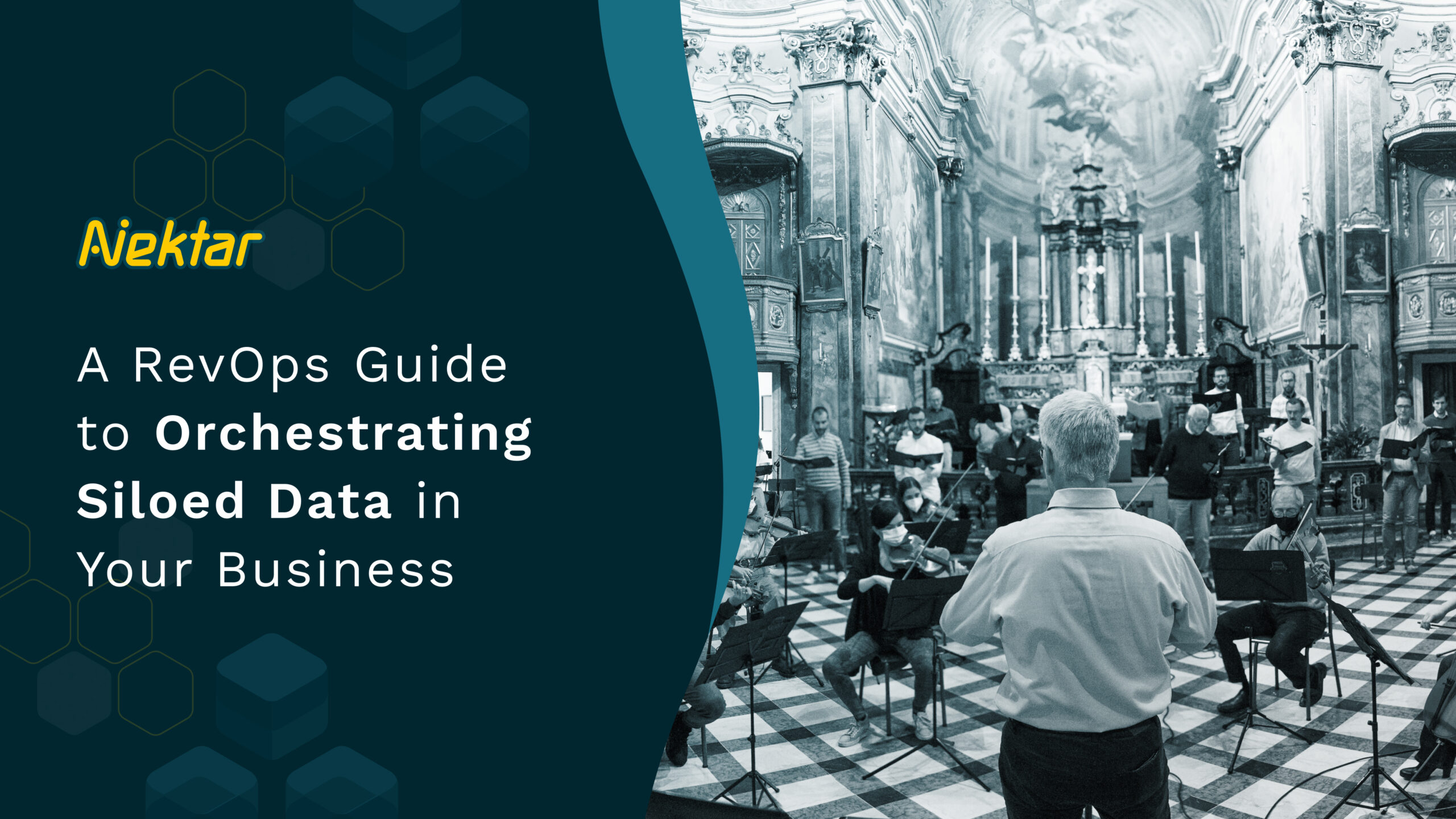In conversation with Mahesh Kumar on The Revenue Lounge podcast, we discussed orchestrating siloed data to drive business decisions. Now, we’ve turned this into a practical RevOps guide for you.
Mahesh is a RevOps leader with more than 11 years of experience in high-growth and dynamic sales and marketing environments. He started with sales, moving into marketing, and then became involved in putting together the right tech stacks for RevOps, before it was even mainstream.
Given his background in both sales and marketing, Mahesh is in a unique position to witness firsthand where misalignment between the teams happens. And therefore, he correctly points out that siloed data has a significant adverse impact on RevOps.
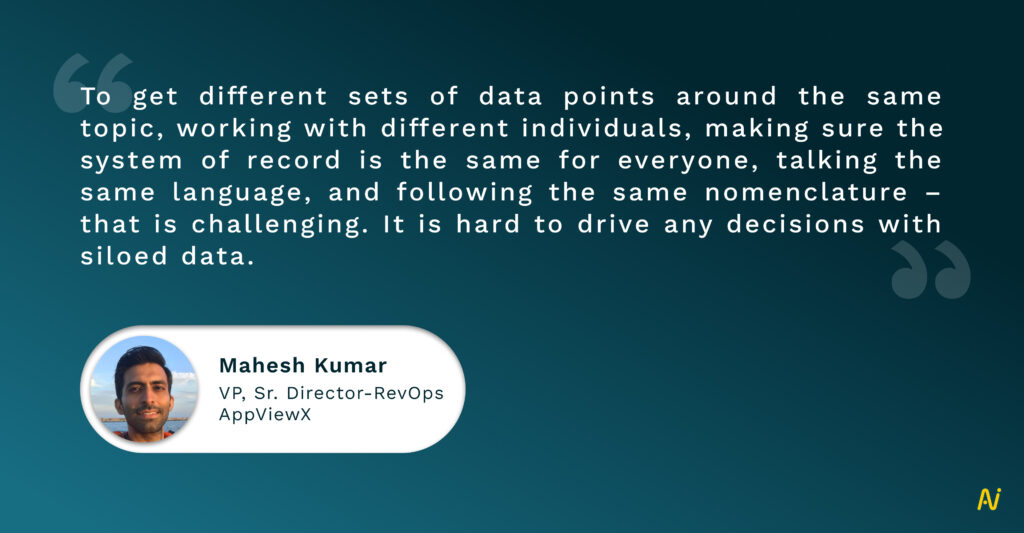
90% of organizations cite data silos as a challenge to business growth.
Every organization has data that it could leverage to make effective revenue decisions. But what happens when most of it is stuck in systems that don’t talk to each other?
Fragmented data sets across the RevOps tech stack hinder opportunities to –
- Provide exceptional customer experience
- Prioritize accurately
- Effectively engage with buyers
As we discussed with Mahesh throughout the podcast, organizations need a unified system of record that breaks down data silos and transforms data into usable sales intelligence. This RevOps guide delves into a summary of our conversation to highlight the importance of revenue orchestration for growth.
You can view the full interview below.
Data Orchestration: Next-gen RevOps
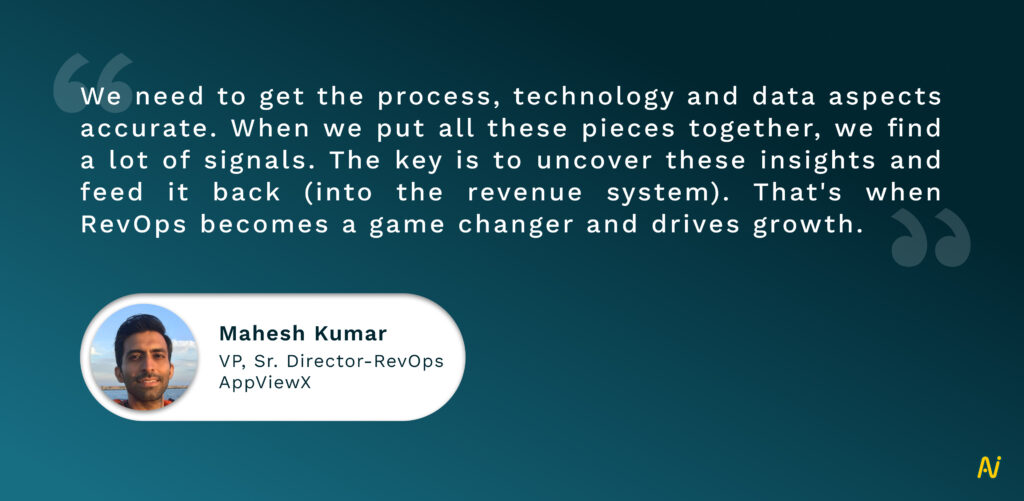
That’s what data orchestration helps with.
In more specific terms, data orchestration is the coordinated process of acquiring, cleaning, matching, and enriching data, making it accessible across the tech stack. It supports capturing data from several sources, unified in a centralized system. This system organizes the data, keeping it ready for use by revenue professionals.
But why is it data orchestration and not consolidation?
As Mahesh says,

Data orchestration serves the larger problem of troubled interconnectivity within the revenue ecosystem by using a unified approach.
For this reason, our RevOps guide positions it as the next generation of RevOps, serving as an umbrella function to connect marketing, sales, customer success, and finance. Data orchestration ultimately creates an end-to-end experience for buyers and a unified funnel view for sellers.
The growing significance of data orchestration in business operations signifies the rise of problems most organizations currently face. Increased tools in recent years have exposed a lack of integration and serious system complexity.
As such, data orchestration opens up multiple possibilities to streamline RevOps by:
- Unifying siloed data
- Uncovering hidden insights
- Aligning cross-functional teams
- Driving data-backed decisions
- Ensuring scalability
5 Key Lessons for RevOps to Orchestrate Siloed Data
Let’s explore the lessons shared by Mahesh Kumar on how to navigate the risks of siloed data with a data orchestration strategy
Lesson 1 – Power Data Orchestration With Clean, Contextual Data
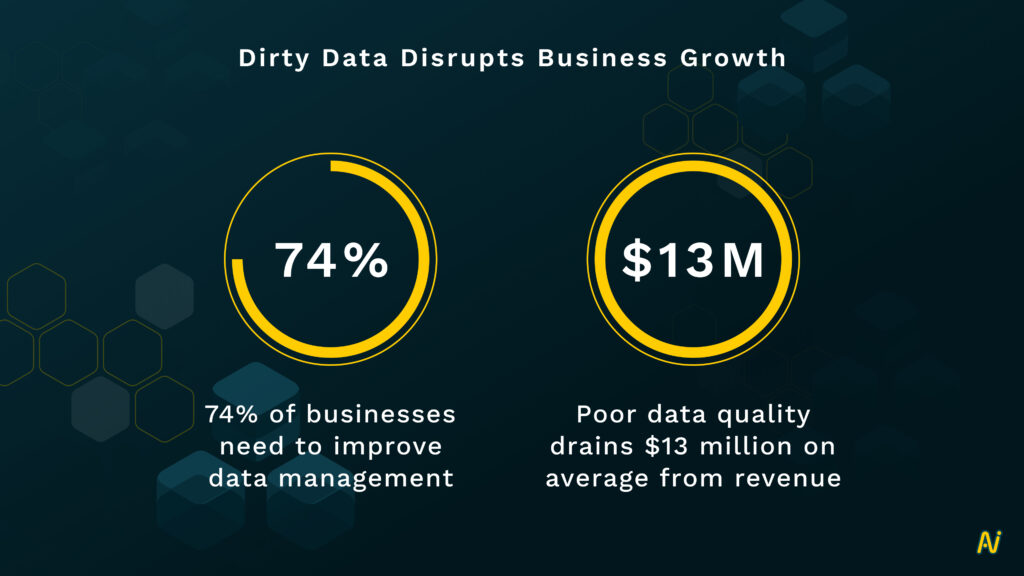
Data quality directly impacts revenue generation.
But not all is hunky dory with maintaining clean data. As many as 74% of businesses say they need to improve data management to avoid losing their financial and competitive edge.
Poor data quality also hits organizations where it hurts the most, draining nearly $13 million yearly from their revenue.
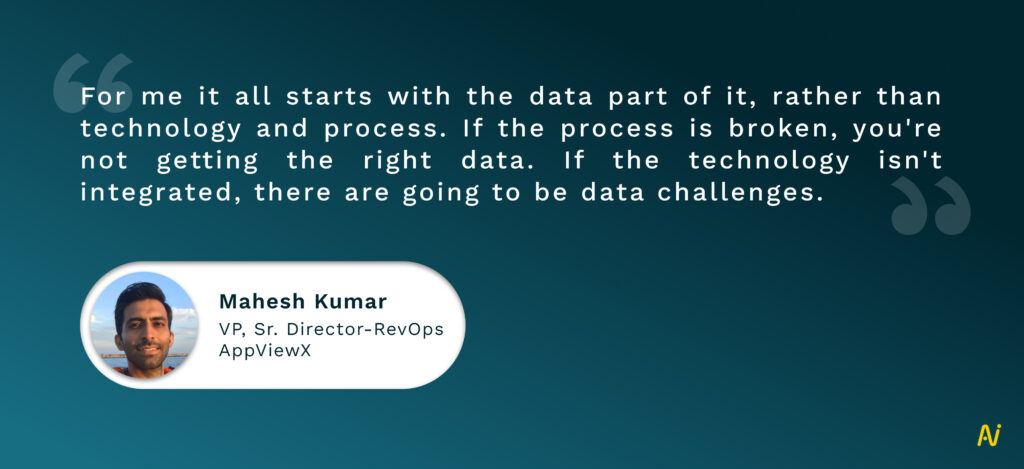
Clean data is what drives the speed to leads. It delights buyers, reduces sales friction, and helps measure ROI more effectively.
Data quality shouldn’t be an afterthought. It’s the very core of every customer acquisition and retention strategy.
Maintaining data quality is challenging. But clean data’s benefits outweigh these efforts by a considerable margin.
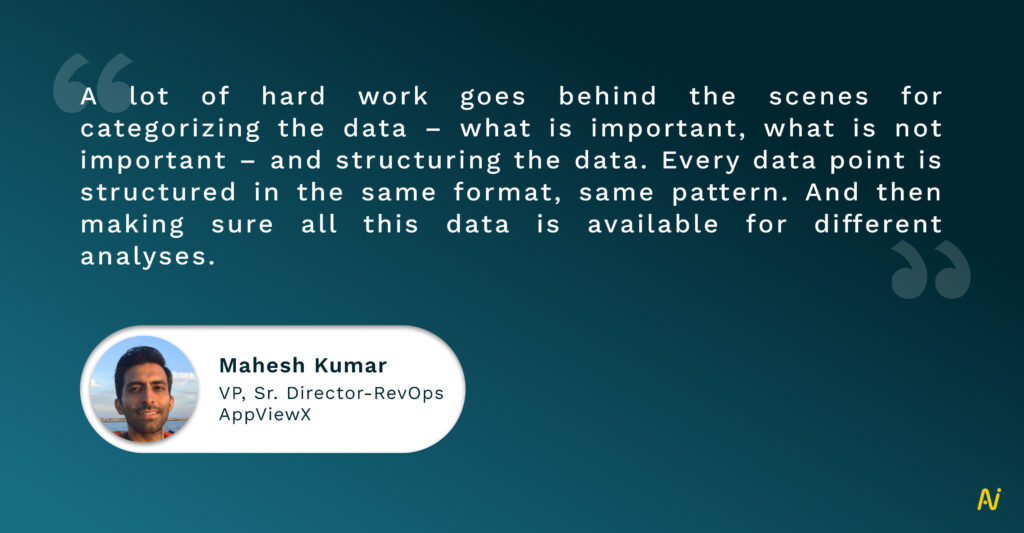
High-quality data is the key to building a solid RevOps function. It provides critical, relevant, and accurate data to help leaders access timely and actionable insights, streamline processes, and make informed business decisions.
Lesson 2 – Uncover Insights To Drive Unforgettable Buyer Experiences
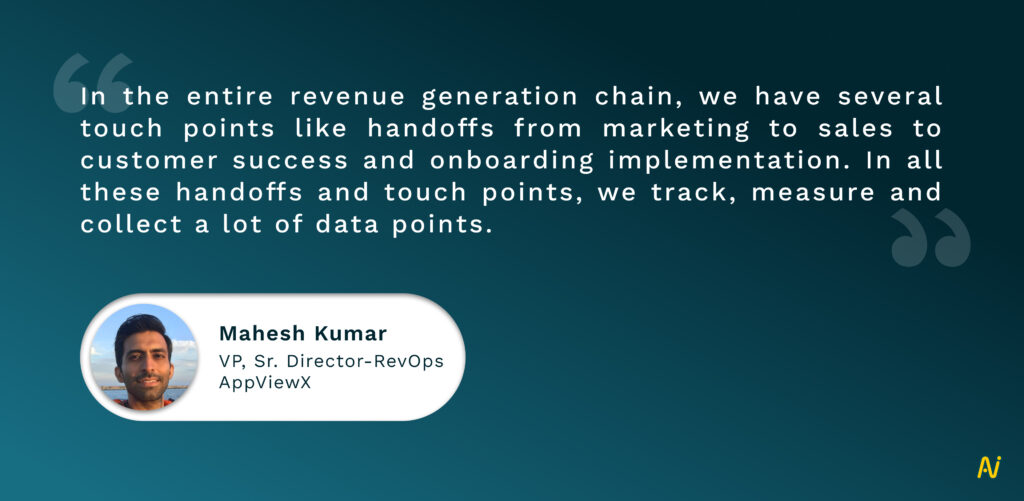
An important benefit this RevOps guide highlights is insights acquired from orchestrated data.
A lack of qualitative insights could throw your customer journey and experience into disarray. Nor would you have a stronghold on evolving buyer trends, some of which are mentioned below.

Today’s buyer isn’t an individual but a committee of key stakeholders across the buyer organization. Each stakeholder plays a vital role in the sales process.
Self-serve buying is on the rise. At least 22% of decision-makers use digital self-service solutions to identify and evaluate vendors. This number is only set to grow as tech evolves.
On average, buyers can engage with sellers anywhere, using ten or more channels throughout their purchase journey. This boosts omnichannel buying. Sellers want to meet buyers where they’re active and get more face time. As such, virtual selling via digital channels is set to predominate.
Without actionable revenue intelligence, you’re unaware of these developing customer trends. You risk having sellers who stick to conventional selling. These reps don’t understand that their out-of-date approaches are ineffective as prospects move away from prescribed buying steps toward new ones.
Clean and consistent data provides complete visibility into buyer personas at account and opportunity levels. It also lets you accurately segment your audience and gather deeper knowledge of the ICP. You can use this information to outline buyer experience expectations.
You could also target each account with relevant sales and marketing collateral based on where it falls in the buying cycle. And how can we forget about the lucrative opportunity to personalize buyer-seller interactions and create considerable value? This builds confidence in the sales process and your offering.
In fact, B2B customers are 1.5 times more likely to complete high-margin deals without second guessing if they’re confident in their decision.
However, to keep your buyer insights fresh, it’s essential to review them every month or quarter instead of letting them stagnate for a year or more. This has primarily worked well in Mahesh’s favor.
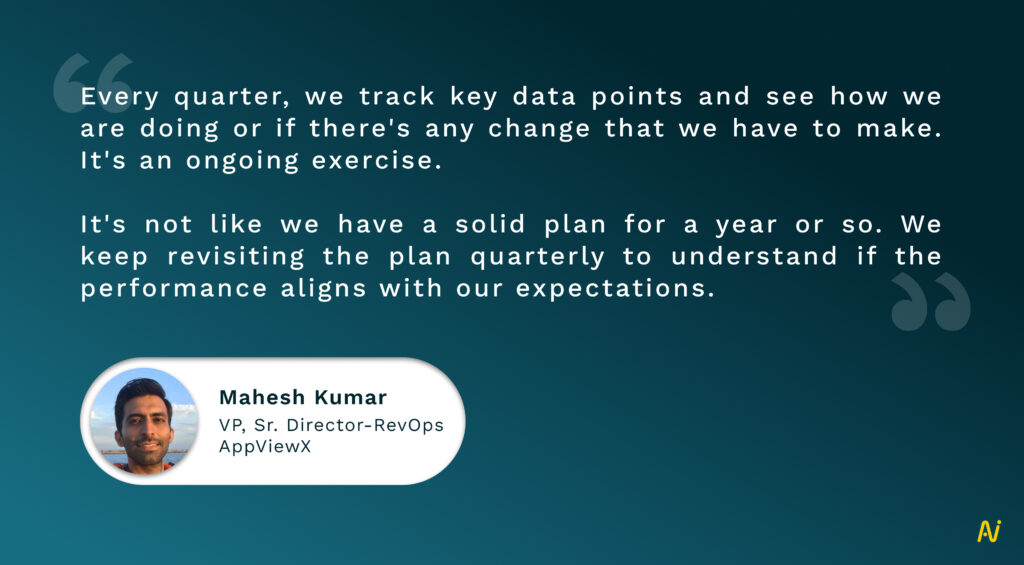
Keeping a pulse on updated insights lets you take quick action and provide immediate feedback to the team on stalled deals. It also allows you to change course using leading indicators. Leading indicators highlight real-time sales action, driving predictable revenue for your organization.
Actionable sales intelligence uncovered by Revenue Orchestration identifies and accelerates new growth opportunities in the pipeline for creating unforgettable buyer experiences.
Lesson 3 – Ensure All Revenue Teams Speak the Same Data Language
Getting cross-functional alignment right, particularly between sales and marketing, is a web that’s yet to be appropriately untangled. Even recently, nearly 50% of employees said they find it challenging to share information seamlessly between teams.
The culprit – poorly integrated systems leading to siloed data.

There’s no saying when disruptive global or economic events can change the revenue game drastically, sometimes even overnight. It’s simply unfathomable for a disconnected sales and marketing relationship to exist now.
Additionally, the buying process is more complex today. The buying committee wants to speak with multiple people at the seller’s end. They cite a better evaluation of the service provider’s company, processes, and offerings as the primary reason behind this request.
In challenging situations like these, a RevOps guide for Revenue Orchestration provides the much-needed cross-functional alignment among teams, processes, and systemic integrations.
All teams involved in the RevOps process collaborate over integrating their respective tools and data. For instance, sales operations will connect with CRM, marketing automation, and customer success and marketing applications.
Data is the foundation of this orchestration.
Mahesh sheds more light on how this plays out in a real-world situation:
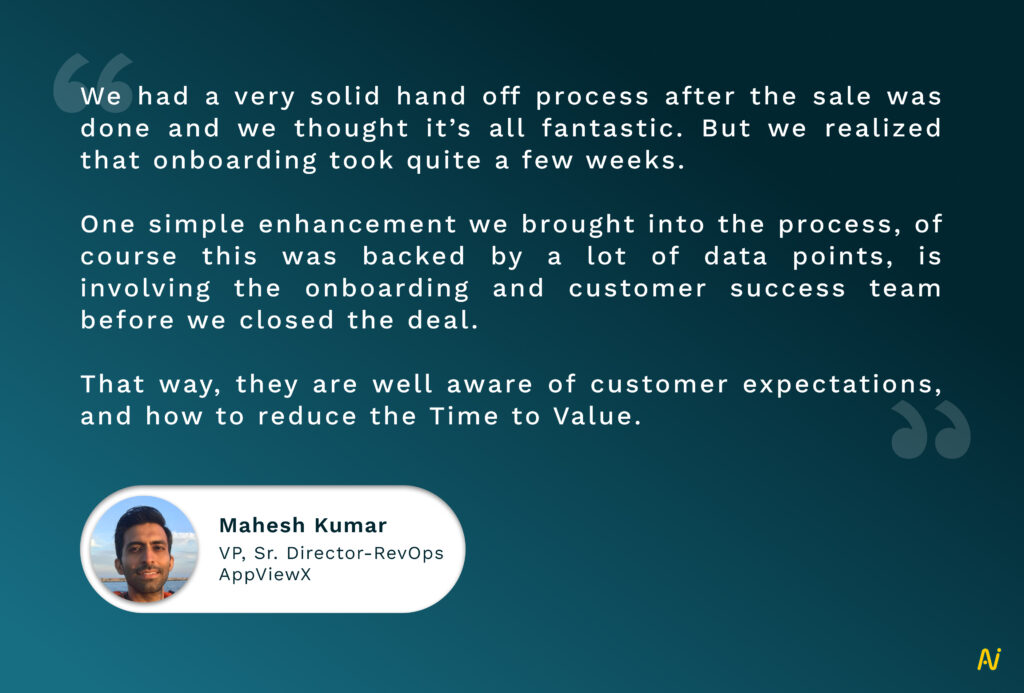
Several organizations are already trying this in the form of account-based marketing with significant progress. They’ve witnessed an 86% improvement in win rates when ABM strategies align with sales activities.
GTM teams can collaborate best when they trust the CRM data.
For that reason, your database shouldn’t be an added burden. Instead, transform it into a system of insight through data orchestration to achieve shared business goals. The end state of such a GTM strategy will be a completely parallel system without distinctions between sales, marketing, and customer success.
Lesson 4 – Facilitate Executive Buy-in
There’s only one way to kickstart data Orchestration seamlessly – by instilling a data-first culture. This is only possible by securing leadership buy-in.
Leaders may assume that their processes are optimum for business growth. Change is inevitable when these processes don’t help achieve goals, and that’s the time to rethink. Encouraging the top layer to start the orchestration process was what Mahesh did.
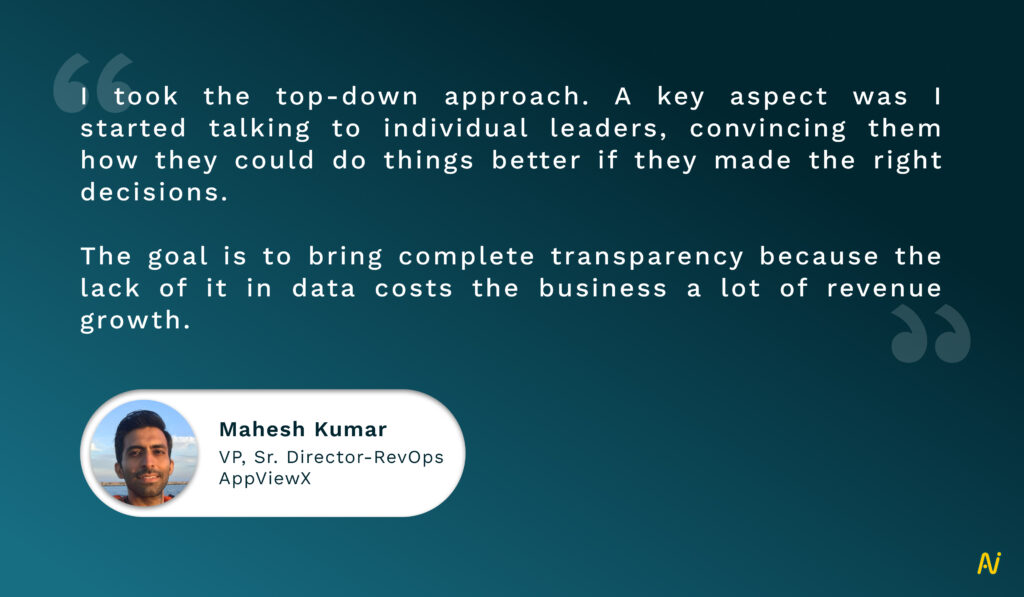
But not all leaders embrace change with open arms. Getting executive buy-in could be an intimidating and tedious activity.
Mahesh suggests involving them in the orchestration process by presenting strong use cases, depending on the organization’s maturity. Then, you can pick those use cases, turn them around with Revenue Orchestration, and show leaders success.
The end goal is to have answers to two questions:
- Where does the real problem lie?
- And, what’s missing in the entire RevOps puzzle?
Encourage executive buy-in by maintaining focus on the big picture – the entire customer journey and experience – instead of making just the sales team happy.
Leadership support will also help you factor in scalability. Rather than short-term solutions, you can take a long-term strategic approach and build systems that scale in line with business growth.
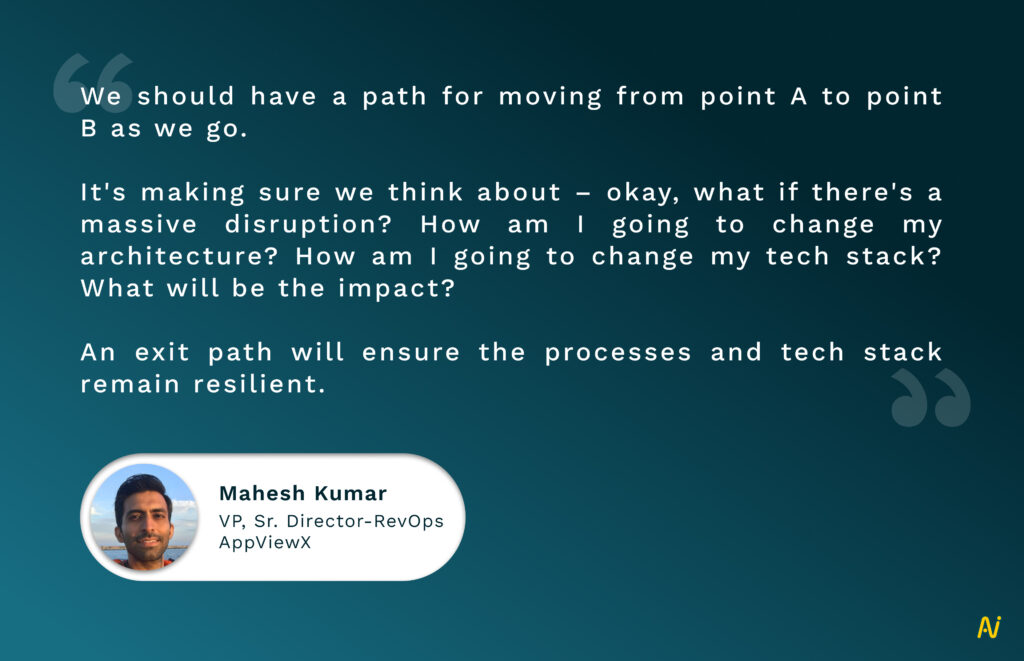
This RevOps guide encourages executive buy-in and pushes you to build new capabilities, shifting from a risk mitigation mindset to continuous innovation and experimentation across the revenue operations team.
Lesson 5 – Tie It All Together With an Organizational Culture Shift
Siloed data often points to a fragmented workplace culture. Vertical divisions work independently with no information exchange outside of each one’s own domain.
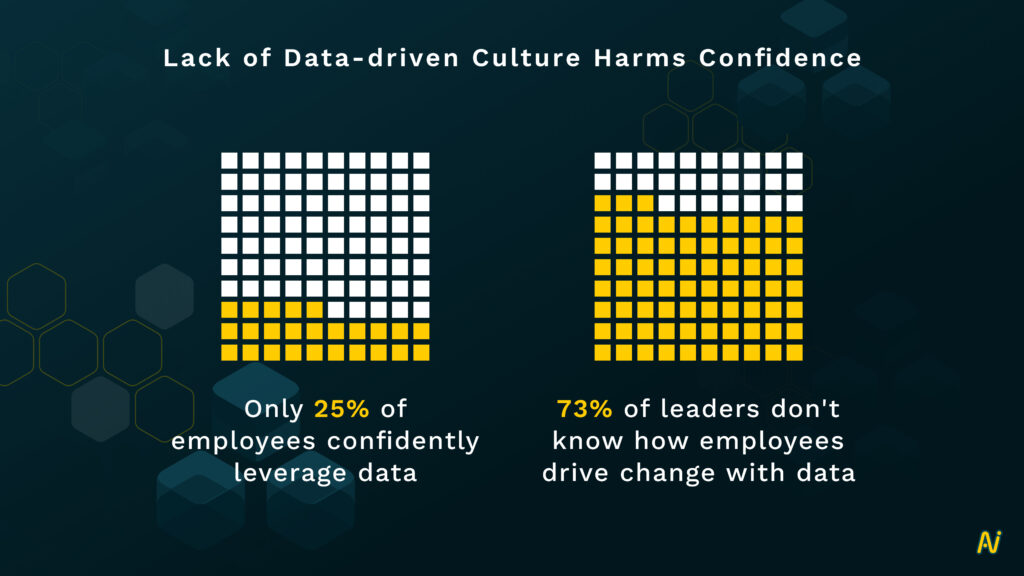
In organizations that don’t follow a data-driven culture, teams face challenges in deriving valuable insights. Only 25% of employees are confident in leveraging data to their benefit. Whereas 73% of C-suite leaders don’t know how their employees are driving change with data.
Some organizations inherit out-of-date systems or operate with already existing legacy tech stacks. These systems are difficult to manage and integrate.
At a time in business history when connected data is table stakes for growth, Revenue Orchestration facilitates healthy cultural shifts across your company. To Mahesh, this shift holds notable gravity.

It sets up your team for long-term thinking.
For some organizations, the focus is on “what are the next ten deals going to be, and how will they help hit the numbers?” But for that to happen successfully, you need the correct data to make the right decisions.
Orchestrating siloed data adds momentum to your growth by defining the correct path and establishing a culture of sharing. And as this data culture spreads across your organization, you can move into introducing joint data governance.
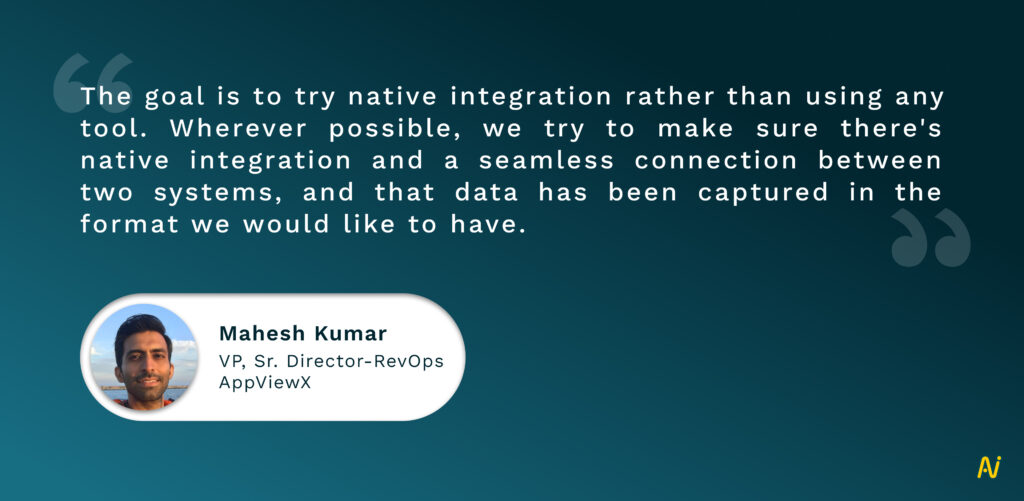
Revenue-wise, a data-first culture has remarkable benefits. Organizations promoting data sharing are set to outperform competitors on most business metrics by 2023.
Use this RevOps guide to look at metrics from a top-down approach instead of sticking to individual reporting, suggests Mahesh. Covering them from a long-term strategic perspective to daily metrics gives holistic insights.
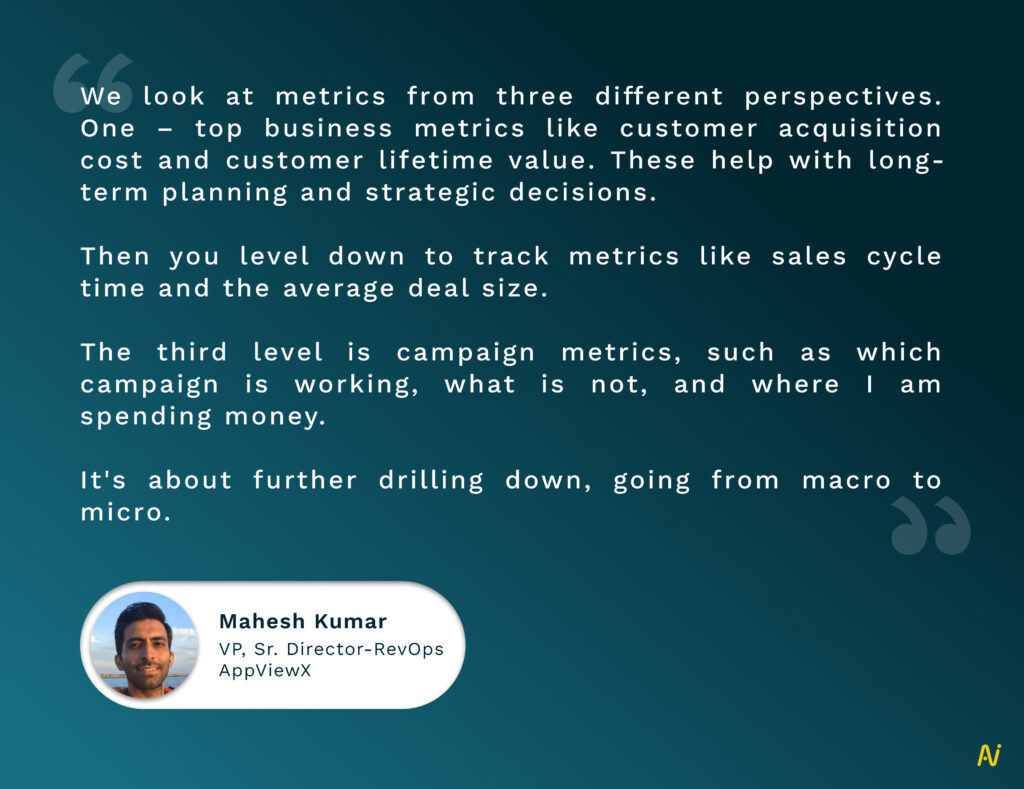
Orchestrate Data to Break Down Silos
Today, RevOps is evolving from a cost center into a profit center. It becomes a crucial revenue driver when you can dig into hidden, scattered, or siloed data across teams and systems. And hits the nail on the head when you use that data to acquire valuable insights.
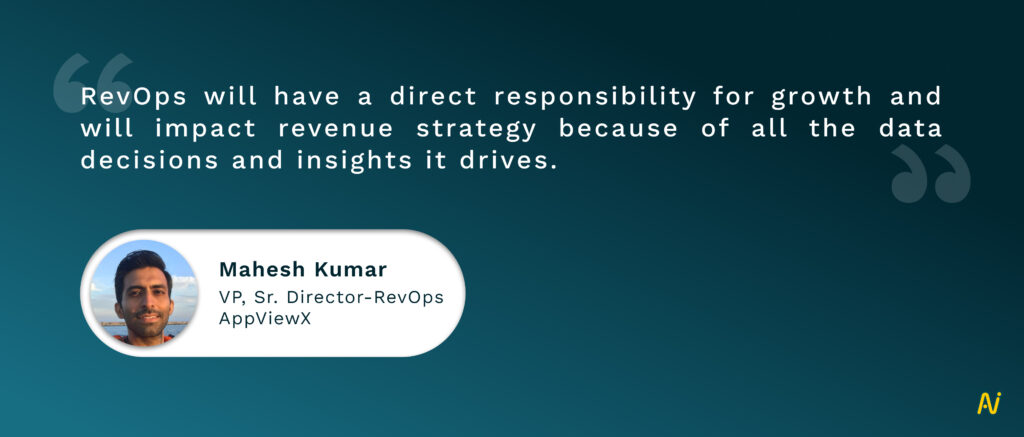
You can transform your organization through data orchestration by breaking down data silos and unifying your tech stack. With systems in place to move past insight barriers, you get superior visibility across the modern sales funnel.
Elevate your buyer journey. Bring all revenue-generating departments on the same page to understand your data better.
Learn more about the world of RevOps from experts by tuning in to our podcast – The Revenue Lounge.
Here’s a latest episode:
About Nektar
Nektar orchestrates your revenue data for you, using clean CRM data to provide a unified funnel view. It lets you access 360-degree views of GTM functions, error-free reporting, and cross-functional alignment to achieve business growth.
Fast-track your journey to predictable revenue.
